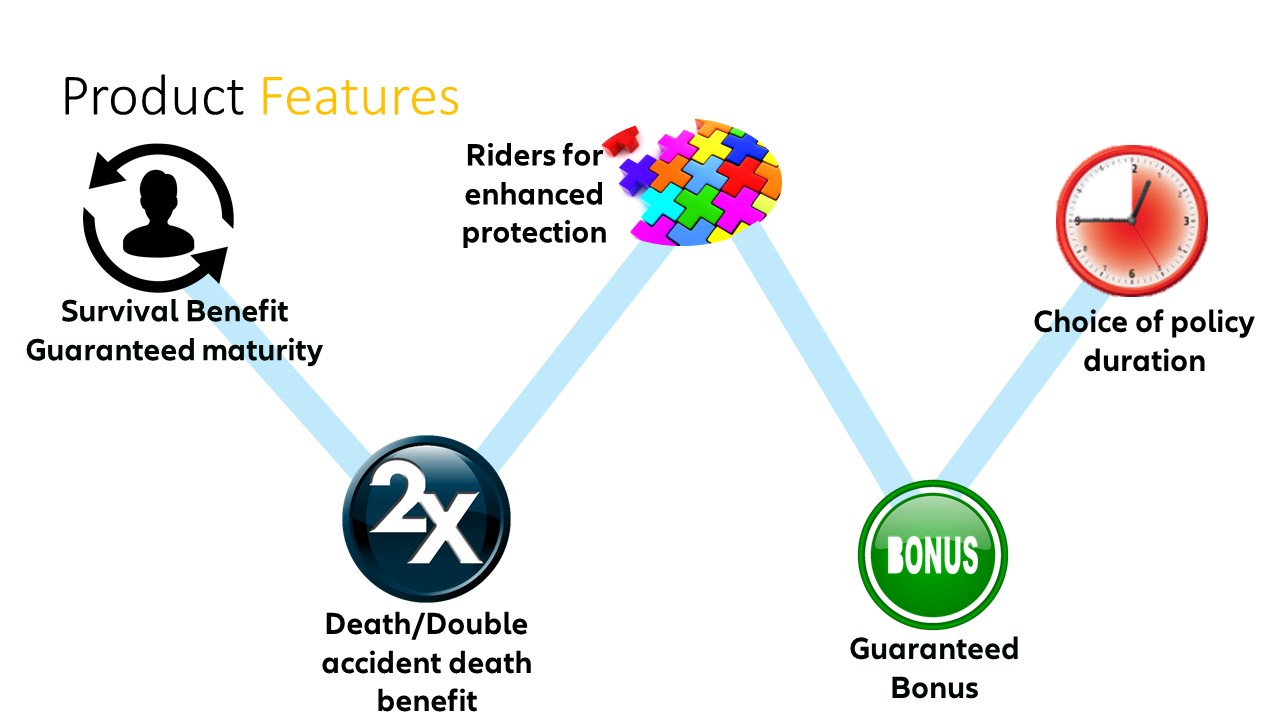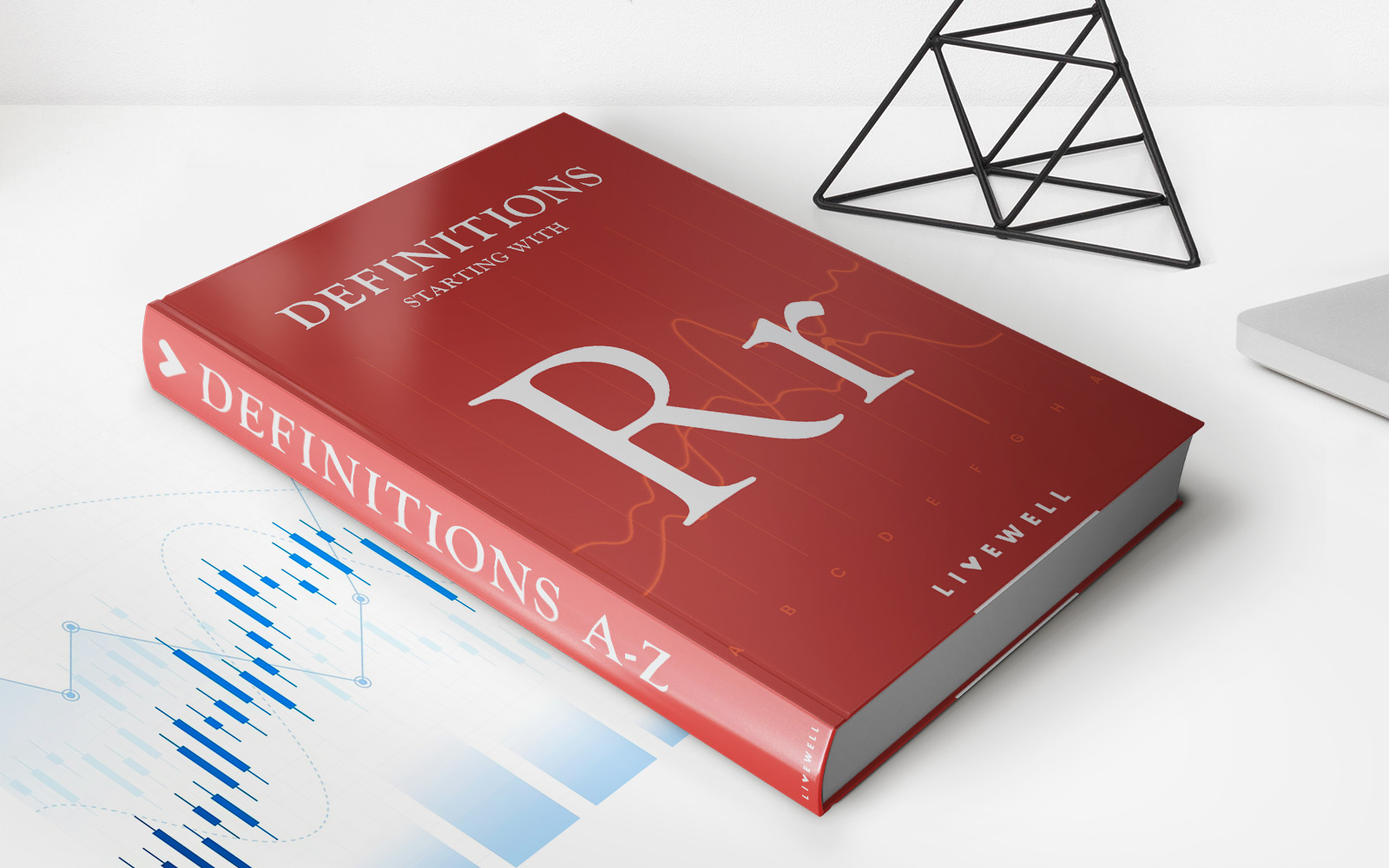

Finance
What Is A Juvenile Life Insurance Policy?
Published: October 16, 2023
Learn about juvenile life insurance policies and how they can help secure your child's financial future. Discover the benefits of this financial tool and make the best decision for your family's finance.
(Many of the links in this article redirect to a specific reviewed product. Your purchase of these products through affiliate links helps to generate commission for LiveWell, at no extra cost. Learn more)
Table of Contents
- Introduction
- Definition of Juvenile Life Insurance Policy
- Features and Benefits of Juvenile Life Insurance Policy
- Types of Juvenile Life Insurance Policies
- How Juvenile Life Insurance Policies Work
- Pros and Cons of Juvenile Life Insurance Policies
- Factors to Consider when Choosing a Juvenile Life Insurance Policy
- Conclusion
Introduction
When it comes to planning for the future, many parents focus on securing their child’s financial well-being. One way to do this is by considering a juvenile life insurance policy. While the thought of life insurance may seem daunting for a child, it can actually be a wise investment that provides long-term benefits.
A juvenile life insurance policy is a special type of life insurance that is designed specifically for children. It provides coverage for a child’s life, offering peace of mind to parents knowing that their child’s financial needs will be taken care of in the event of an unforeseen tragedy.
While it may seem morbid to think about life insurance for a child, juvenile life insurance policies offer more than just a death benefit. They can also serve as a financial tool for your child’s future. These policies can accumulate cash value over time, providing a savings component for education expenses or other financial needs later in life.
Just like adult life insurance policies, juvenile life insurance policies come with a variety of features and benefits that can be tailored to fit your family’s unique needs. Understanding what these policies offer and how they work is essential when considering if it’s the right financial decision for your child’s future.
In this article, we will explore the definition, features, and benefits of juvenile life insurance policies. We’ll also discuss the different types of policies available, how they work, as well as the pros and cons to help you make an informed decision. Additionally, we’ll highlight the factors you should consider when choosing a juvenile life insurance policy.
While it is important to protect your child’s financial future, it’s equally important to understand the options available and make the right decision based on your family’s needs and circumstances. So, let’s dive into the world of juvenile life insurance and discover how it can secure your child’s financial well-being.
Definition of Juvenile Life Insurance Policy
A juvenile life insurance policy is a type of life insurance that is designed specifically for children. It offers financial protection and security for your child’s future. Unlike typical life insurance policies that are taken out by adults, juvenile life insurance policies cover the life of a child and can be purchased by parents or legal guardians.
Similar to adult life insurance policies, juvenile life insurance policies provide a death benefit in the event of the child’s passing. This benefit can help cover funeral expenses and provide financial support to the family during a difficult time.
However, what sets juvenile life insurance policies apart from other forms of life insurance is the additional benefits they offer. These policies can accumulate cash value over time, which means that they have a savings component that can be accessed by the policyholder in the future. The cash value can be used for various purposes, such as funding education expenses, starting a business, or purchasing a home.
Additionally, juvenile life insurance policies often come with the option to convert the policy into a permanent life insurance policy once the child reaches adulthood. This conversion allows the child to continue the coverage and potentially build more significant cash value as they grow older.
It’s important to note that juvenile life insurance policies are typically less expensive than adult life insurance policies. This is because children are generally considered to be lower risk compared to adults in terms of mortality rates. As a result, the premiums for juvenile life insurance policies are often more affordable.
It’s important to understand that a juvenile life insurance policy is not meant to be a primary source of financial support for the child. Rather, it is a supplemental form of protection that can provide financial security and a savings component for the child’s future needs.
Now that we have defined what a juvenile life insurance policy is, let’s explore the features and benefits it has to offer.
Features and Benefits of Juvenile Life Insurance Policy
Juvenile life insurance policies come with a range of features and benefits that can provide financial security and peace of mind for both the child and the parents. Let’s explore some of the key features and benefits:
- Death Benefit: Like any life insurance policy, a juvenile life insurance policy offers a death benefit. In the unfortunate event of the child’s passing, the policy will provide a sum of money to the beneficiaries. This benefit can help cover funeral expenses and provide financial support to the family during a difficult time.
- Cash Value Accumulation: One of the unique aspects of juvenile life insurance policies is the ability to accumulate cash value over time. When premiums are paid, a portion of the money goes towards building cash value within the policy. This cash value grows tax-deferred and can be accessed by the policyholder in the form of a loan or withdrawal. The accumulated cash value can be used for various purposes, such as financing education expenses, down payments on a future home, or even starting a business.
- Low Premiums: Juvenile life insurance policies are generally more affordable compared to adult life insurance policies. This is because children are considered low-risk individuals in terms of mortality rates. As a result, the premiums for juvenile life insurance policies are typically lower, making it an accessible option for parents who want to secure their child’s financial future.
- Flexible Coverage Options: Juvenile life insurance policies offer flexibility when it comes to coverage options. Parents can choose the amount of coverage they wish to have for their child. This allows the policy to be tailored to meet the specific needs of the family and the child’s future financial goals.
- Conversion Options: Many juvenile life insurance policies also provide the option to convert the policy into a permanent life insurance policy once the child reaches adulthood. This allows the child to continue the coverage and potentially build more significant cash value over time. The ability to convert the policy ensures that the child has continued protection and the potential to access a valuable financial asset in the future.
The benefits of a juvenile life insurance policy extend beyond providing financial security. By starting a policy early in a child’s life, parents can take advantage of the policy’s cash value accumulation and potentially provide a significant monetary buffer for their child’s future needs.
Now that we have explored the features and benefits of a juvenile life insurance policy, let’s delve into the different types of policies available in the market.
Types of Juvenile Life Insurance Policies
When it comes to juvenile life insurance policies, there are a few different types to consider. Each type offers its own set of features and benefits. Let’s take a closer look at the most common types of juvenile life insurance policies:
- Term Life Insurance: This type of juvenile life insurance policy provides coverage for a specific period, typically ranging from 10 to 30 years. It offers a death benefit if the child passes away during the term of the policy. Term life insurance is often more affordable compared to other types of policies, making it a popular choice for parents who want temporary coverage for their child.
- Whole Life Insurance: A whole life insurance policy offers coverage for the child’s entire life, as long as the premiums are paid. It not only provides a death benefit but also includes a cash value component that accumulates over time. Whole life insurance policies tend to have higher premiums, but they provide lifelong coverage and the potential for significant cash value accumulation.
- Universal Life Insurance: Universal life insurance policies provide flexibility in premium payments and death benefit amounts. They also come with a cash value component, which can be invested and potentially grow. This type of policy allows parents to adjust the coverage and premium payments to fit their changing financial circumstances.
- Variable Life Insurance: Variable life insurance policies offer both a death benefit and a cash value component. Unlike other types of policies, the cash value in a variable life insurance policy can be invested in various financial instruments such as stocks, bonds, and mutual funds. This investment component introduces the element of market risk, as the cash value is subject to fluctuations based on the performance of the investments.
It’s important to carefully consider the different types of juvenile life insurance policies and assess which one aligns with your goals and financial situation. Speaking with a qualified insurance professional can help you understand the nuances of each policy type and select the one that best suits your needs.
Now that we have explored the various types of juvenile life insurance policies, let’s delve into how these policies work in practice.
How Juvenile Life Insurance Policies Work
Juvenile life insurance policies function similarly to other types of life insurance policies, albeit with some unique characteristics that cater specifically to children’s needs. Here is a breakdown of how juvenile life insurance policies typically work:
Purchasing the Policy: Parents or legal guardians can purchase a juvenile life insurance policy on behalf of their child. The application process involves providing personal information about the child, such as their name, date of birth, and any relevant health information. The insurance company will assess the child’s eligibility and provide a premium quote based on factors such as the coverage amount, policy type, and the child’s health status.
Paying Premiums: Once the policy is in effect, regular premium payments must be made to keep the policy active. Premiums can often be paid annually, semi-annually, quarterly, or monthly, depending on the policy’s terms. It’s important to keep up with the premium payments to ensure continuous coverage.
Accumulating Cash Value: A significant advantage of juvenile life insurance policies is the ability to accumulate cash value over time. As premiums are paid, a portion of the money goes into the policy’s cash value component. This cash value grows tax-deferred and can be accessed by the policyholder later in life. It’s important to note that accessing this cash value may affect the death benefit amount and future premiums.
Conversion Option: Many juvenile life insurance policies offer the option to convert the policy into a permanent life insurance policy once the child reaches adulthood. This allows the child to continue coverage and, depending on the policy, may provide the ability to enhance the accumulated cash value over time. The conversion option ensures that the child has continued protection and the potential to access a valuable financial asset in the future.
Death Benefit: In the unfortunate event of the child’s passing, the policy’s death benefit will be paid out to the designated beneficiaries. This benefit can be used to cover funeral expenses, outstanding debts, or to provide financial support to the family during a difficult time.
It’s important to review the terms and conditions of the policy carefully to understand the specific features, coverage, and limitations. Working with an experienced insurance professional can help ensure that you select a juvenile life insurance policy that aligns with your goals and financial needs.
Now that we understand how juvenile life insurance policies work, let’s discuss the pros and cons associated with these policies.
Pros and Cons of Juvenile Life Insurance Policies
Like any financial product, juvenile life insurance policies come with their own set of advantages and disadvantages. Understanding these pros and cons will help you make an informed decision about whether such a policy is right for your child’s financial future. Let’s explore the benefits and drawbacks:
Pros:
- Financial Security: Juvenile life insurance policies provide financial security by offering a death benefit, which can be crucial in covering funeral expenses and providing support to the family in the event of the child’s passing.
- Cash Value Accumulation: One of the major advantages of juvenile life insurance policies is the ability to accumulate cash value over time. This cash value can be accessed later in life and used for various purposes, such as education expenses, purchasing a home, or starting a business.
- Low Premiums: Juvenile life insurance policies are often more affordable compared to adult life insurance. This is because children are considered low-risk individuals in terms of mortality rates. Lower premiums make it more accessible for parents to provide financial protection for their child.
- Flexible Coverage Options: Juvenile life insurance policies offer flexibility in terms of coverage amount, allowing parents to choose the right amount of coverage to suit their child’s needs. This ensures that the policy meets the specific financial goals of the family.
- Conversion Option: Many juvenile life insurance policies allow for conversion to a permanent policy when the child reaches adulthood. This provides continued coverage and the potential for enhanced cash value accumulation in the future.
Cons:
- Not a Primary Source of Support: Juvenile life insurance policies should not be relied upon as the sole financial support for a child. They should be seen as a supplemental form of protection and savings for the child’s future needs.
- Opportunity Cost: The cash value accumulation in a juvenile life insurance policy may come at a cost. Accessing the cash value or taking policy loans may reduce the death benefit and affect future premiums. It’s important to carefully consider the trade-offs before making use of the policy’s cash value component.
- Other Investment Options: Depending on your financial goals, there may be other investment options that could provide better returns than a juvenile life insurance policy. It’s essential to explore and compare various investment avenues before committing to a specific policy.
- Premium Commitment: Juvenile life insurance policies require the commitment of regular premium payments over an extended period. Failing to keep up with the payments may result in policy termination and the loss of accumulated cash value.
Considering these pros and cons, it’s important to weigh the benefits against the drawbacks and evaluate whether a juvenile life insurance policy aligns with your family’s financial goals and circumstances.
Now that we have explored the pros and cons, let’s discuss the factors to consider when choosing a juvenile life insurance policy.
Factors to Consider when Choosing a Juvenile Life Insurance Policy
Choosing a juvenile life insurance policy for your child requires careful consideration of various factors to ensure that you select the right policy that meets your family’s needs and financial goals. Here are some key factors to consider when making your decision:
- Coverage Amount: Determine the appropriate coverage amount based on your child’s future financial needs. Consider factors such as education expenses, outstanding debts, and potential financial responsibilities. You want to ensure that the policy’s death benefit provides adequate financial protection.
- Type of Policy: Understand the different types of juvenile life insurance policies available, such as term life, whole life, universal life, and variable life. Evaluate the features, benefits, and limitations of each type to determine which one aligns with your objectives and preferences.
- Premium Affordability: Consider your budget and determine the premium amount you can comfortably afford. Compare premium quotes from different insurance providers to find a policy that offers competitive rates while providing the desired coverage.
- Financial Stability of the Insurer: Research the financial stability and reputation of the insurance company offering the policy. Look for ratings from independent rating agencies, such as A.M. Best, to ensure that the insurer has a strong track record of fulfilling its financial obligations to policyholders.
- Policy Riders: Explore any additional policy riders or options available that can enhance the benefits and flexibility of the policy. These may include riders for critical illness coverage, disability waiver of premium, or additional guaranteed insurability.
- Conversion Option: If the policy offers a conversion option, evaluate the terms and conditions associated with converting the policy into a permanent life insurance policy when your child reaches adulthood. Consider the benefits and potential cash value growth that can be achieved through the conversion.
- Policy Exclusions: Understand any exclusions or limitations within the policy. Policies may have limitations on coverage for certain circumstances, such as suicide within the first few years of the policy or engagement in high-risk activities. It’s crucial to be aware of any potential exclusions that may affect the policy’s benefits.
- Professional Advice: Seek guidance from a qualified insurance professional who specializes in juvenile life insurance. They can provide personalized insights and recommendations based on your specific financial situation and goals.
By considering these factors, you will be well-equipped to make an informed decision that aligns with your child’s financial well-being. Remember, robust research and professional advice are crucial to ensure you select the most suitable juvenile life insurance policy.
Now, let’s wrap up our discussion on juvenile life insurance policies.
Conclusion
Choosing a juvenile life insurance policy is an important step towards securing your child’s financial future. These policies not only provide financial protection in the event of the child’s passing but also offer the opportunity for cash value accumulation that can be utilized for various purposes later in life.
Before selecting a juvenile life insurance policy, it is crucial to consider factors such as coverage amount, premium affordability, policy type, and conversion options. Understanding the pros and cons associated with these policies will help you make an informed decision that aligns with your family’s needs and goals.
By starting a juvenile life insurance policy early, you can take advantage of the policy’s benefits and potentially provide a valuable financial asset for your child’s future needs. The cash value accumulated over time can serve as a savings component that can be tapped into when the child reaches adulthood, offering flexibility and financial security.
Remember, it’s essential to review the terms and conditions of the policy carefully and seek advice from a qualified insurance professional to ensure that you choose the right policy that meets your child’s specific needs.
While it may seem uncomfortable to think about life insurance for a child, juvenile life insurance policies can provide peace of mind knowing that your child’s financial security is protected. By investing in their financial future today, you can help set them up for success and provide a valuable financial safety net.
So, take the time to explore your options, consider the factors mentioned, and make a decision that will pave the way for a brighter and more secure future for your child.














